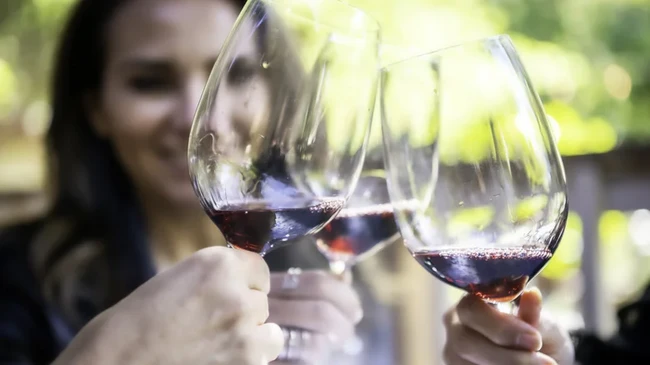✕



✕

Tag:Illegal Sugar Wine California 2025-03-18 14:44

Juanmonino/Getty Images
Wine is big business in California. From Fred Franzia's famous Two-Buck Chuck to vibrant pinot grigio, the state accounts for over 80% of all of the United States' wine production, according to World Population Review. California's sunny climate has a reputation for producing wines that are on the fruitier and sweeter side. But, if you think California wine is too sweet, you might be surprised to learn that it's illegal to add sugar to wine in the Golden State.
First of all, let's be clear that it's impossible to make wine without sugar (which is why you probably shouldn't trust "sugar-free" wine). The key distinction here is between the natural sugars found in grapes and the sugars that are added during the fermentation process. As wine ferments, the yeast transforms the natural sugars in the grapes into alcohol. The sugar left over in the finished wine is known as residual sugar. Having less residual sugar is what makes wine dry, while more residual sugar results in a sweeter wine. However, sometimes grapes don't have enough natural sugar to achieve the desired alcohol level. This is when chaptalization (the technical term for adding sugar to wine during fermentation) comes in.
Chaptalization gets its name from the French chemist Jean-Antoine Chaptal, who promoted and popularized the practice in the early 19th century. The technique isn't meant to make wine sweeter but rather to increase the amount of alcohol produced by the yeast. However, in California, this process is illegal as some people think it allows winemakers to interfere with the wine too much.
Why chaptalization is controversial

Charles O'rear/Getty Images
Chaptalization has a long-established history, was promoted by a Frenchman, and is legal in most of the United States and many parts of Europe. That being said, chaptalization remains a bit of a controversial issue in the winemaking world. Critics view it as excessive manipulation of the winemaking process. Some even think it gives an unfair advantage to winemakers who use the technique. On the other hand, proponents of the technique argue that it's simply another tool for making good wine. The specific legal regulations are complex, but chaptalization tends to be permitted in colder climates that produce low-sugar grapes, and restricted in warmer climates where grapes are naturally higher in sugar.
California's mild "Mediterranean" climate means its grapes tend to be on the sweeter side and, generally speaking, chaptalization isn't necessary. However, California is a huge and geographically diverse state with many climate types (summer in San Francisco famously can get pretty cold). Many people argue that California's ban on chaptalization is an unnecessary and outdated restriction that limits creativity and prevents winemakers from exploring more of the Golden State's terroir. No matter how you feel about chaptalization, we can all agree that it's a great snobby-sounding term to whip out at your next wine tasting.
The Key To Cooking Up The Crispiest Salmon Every Time
Ditch The Foil And Say Goodbye To Soggy Baked Potatoes
Is Soft Serve Just Melted Ice Cream?
Pizza Hut Is Bringing A Beloved Menu Item Back, But You Better Go Fast
Taco Bell's Newest Chalupa Mashes Up 2 Discontinued Menu Items
Instantly Elevate Store-Bought Icing With A Worldwide Favorite Spread
About Us Terms of Service Privacy Policy Contact Us
Hotline(+86)17301604571
 Enterprise WeChat
Enterprise WeChat
for Client Service
 EZBuy
EZBuy
WeChat APP
Sinoexpo Digital Platform
Shanghai Sinoexpo Informa Markets International Exhibition Co., Ltd. All rights reserved
沪ICP备05034851号-77
 沪公网安备31010402000543号
沪公网安备31010402000543号